Apple MacBook Air (2022) review: Truly, the MacBook for everyone

Only Apple will know why it waited this long to give us a completely redesigned MacBook Air. Even now, I’m certain that the introduction of the M1 chip back in 2020 was the perfect time to do it. Anyhow, it's finally here.
After it was unveiled last month at WWDC 2022, I had the chance to play around with it briefly after the announcement and my first impressions were good. Apple seemed to have nailed the fundamentals.
And after spending some time with the updated MacBook Pro with the new M2 chip, I’m even surer now that it’s unlikely that this new MacBook Air will stink. But just to be sure, I ran the usual tests and used it intensively for the past couple of days. Does it hold up? And is this the MacBook most people should get? Let me tell you.
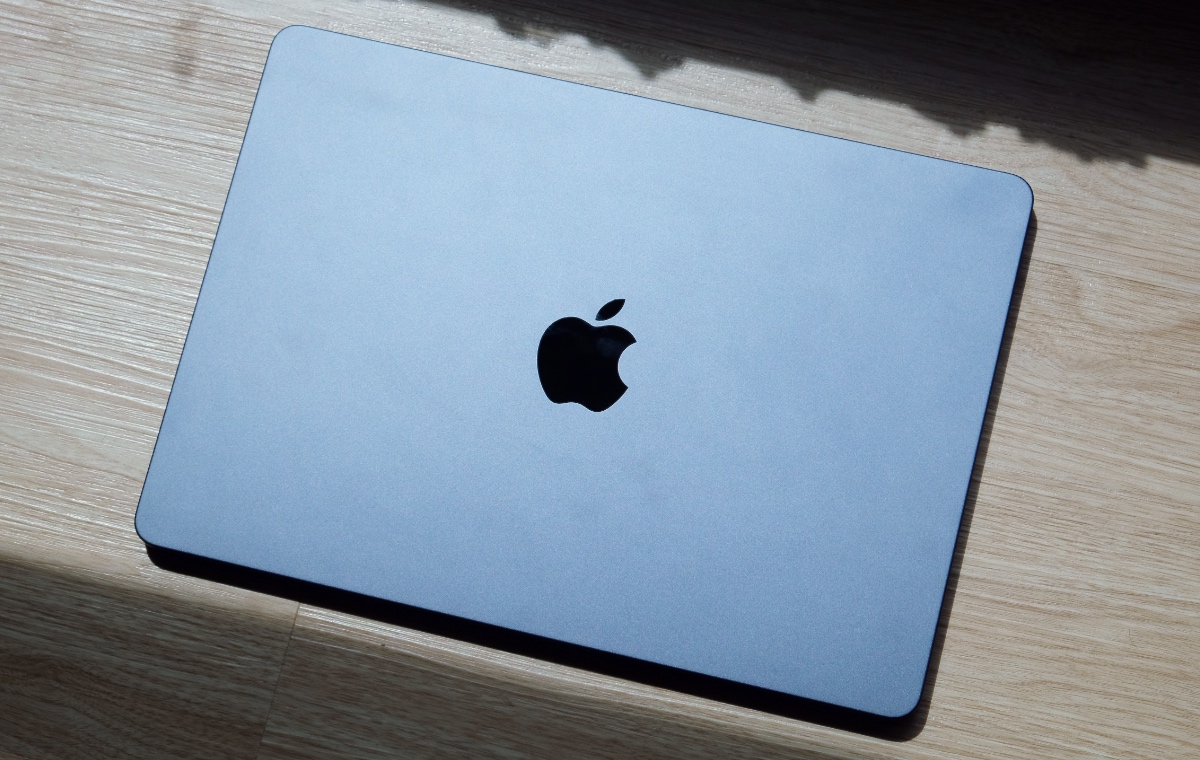
This MacBook Air looks unlike any other MacBook Air before it. Gone is the iconic wedge design and in its place is a more slab-like design with flat sides. You could say it looks like a thinner 14-inch MacBook Pro. From the sides, it looks to me like two iPads stuck together.
The important numbers are 11.3 and 1.24. The first is the MacBook Air’s thickness in millimetres. Interestingly, that’s actually almost thick as two 11-inch iPad Pros. At any rate, it lives up to the reputation of the Air name by being remarkably thin.
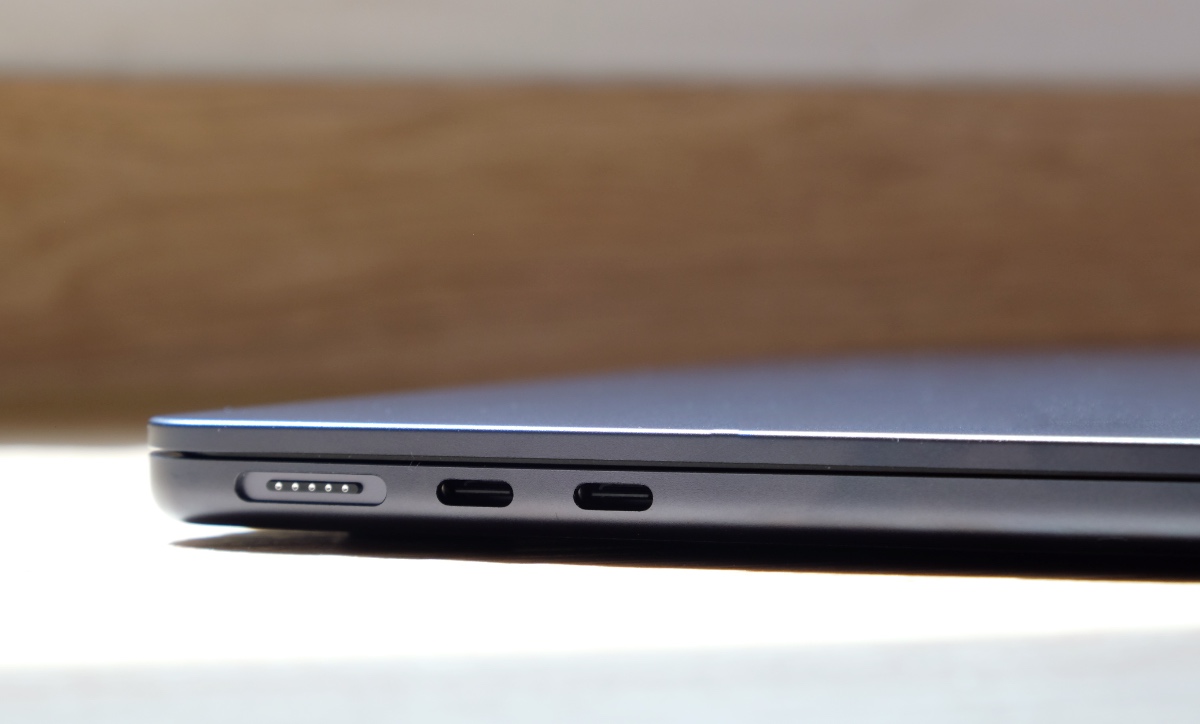
The second number is its weight in kilograms. It’s worth expounding on this because 1.24kg is no longer considered light in today’s context. Of course, I’m not saying that the MacBook Air is cumbersome, but it doesn’t incite wonder when you lift it up for the first time.
You just think, “Oh, yep, it’s pretty light.” This, to me, a long-time Mac user, is a little disappointing because the Air used to be one of the lightest notebooks you could buy. This was the reputation on which the Air name was built.

Through a blend of various alloys of magnesium and carbon fibre, there’s a bevy of PC notebooks today that are lighter. Apple’s decision to stick with heavier aluminium (recycled, of course) has come at the cost of being heavier than some of its PC rivals.
But it pays off in other ways. Unlike these ultra-light PC notebooks, the new MacBook Air has heft and feels solid. The upside to this is that it feels like an expensive, well-made item – which is something you can’t say for many of these ultra-light PC notebooks.
Though there are four colours to choose from, I suspect most people won’t care because they’ll just go straight for Midnight, which is, arguably, the star colour of the launch. I like it too because it appears mostly black but every once in a while, depending on how light falls on it, it can appear very slightly blue.
One thing to note, however, is that Midnight appears to be an absolute fingerprint magnet. The other new colour is Starlight, which is best described as champagne or pale gold. And there are your safe colours Space Grey and Silver.
You can open the lid with one hand and when you do, you are greeted by a 13.6-inch Liquid Retina display. There’s an increasing number of PC notebooks that have OLED displays but sadly the new MacBook Air isn't one of them.
It still has an LCD display and it obviously can’t hold a candle to an OLED display. But as far as LCD displays go, it still looks pretty fantastic. 500 nits of brightness means it gets sufficiently bright, a resolution of 2560 x 1664 pixels means it’s sharp, and P3 colour support means vivid colours.
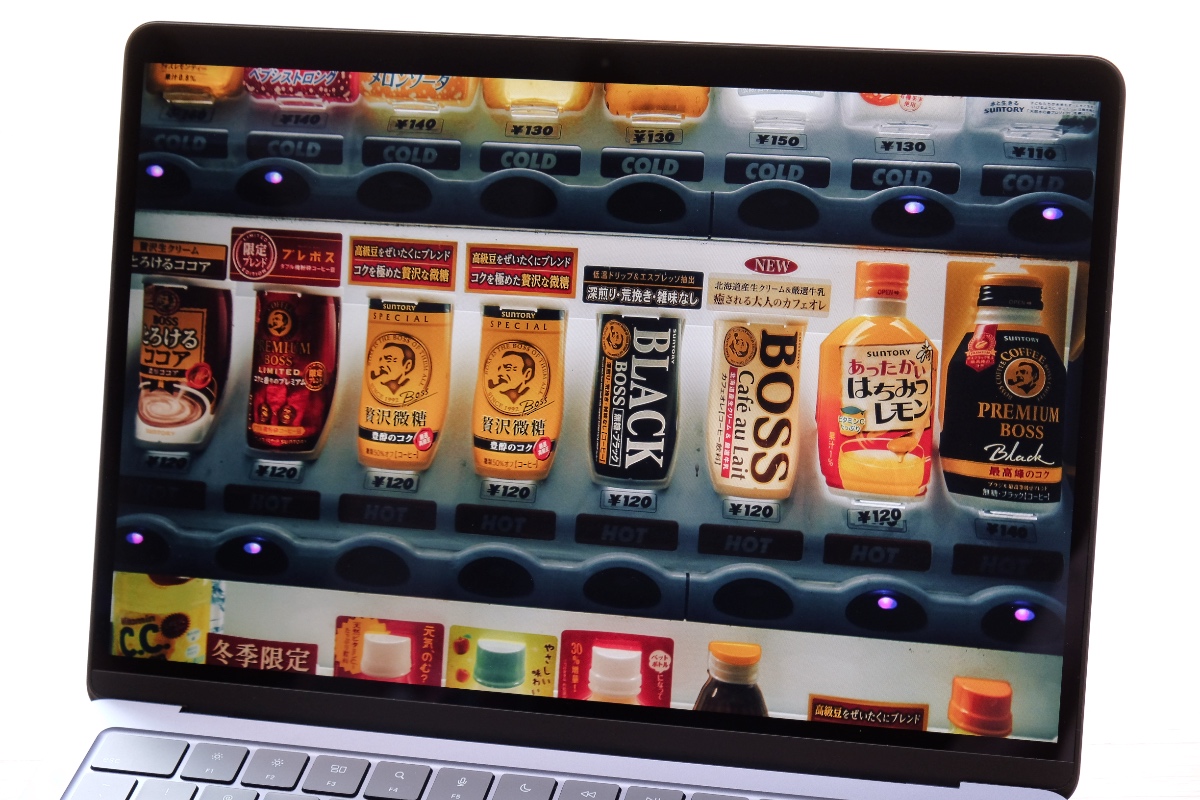
There is also a notch in the middle of the top of the display. I wrote about my thoughts on this at length in my review of the 14-inch MacBook Pro review so I’m not going to do it again.
What I’ll say is that, for most people, it’s less of an issue than you might think it is. You will get over it. It’s annoying only if you use menu bar apps (iStat Menu and Music Bar, in case you were wondering) like me. But even I got over it after a few days too.
Crucially, the webcam is a new 1080p unit. The hardware is identical to the one in the 14 and 16-inch MacBook Pros except that it benefits from having the more advanced ISP (image signal processor) of the M2 chip (more on this chip later). The images you see are a big step up in improvement over the last MacBook Air. It won't blow your mind but it'll definitely suffice for online meetings.

What’s more important are the ports. Unlike the updated 13-inch MacBook Pro which still only has two USB-C ports, the MacBook Air has two USB-C ports (supports Thunderbolt 3 and USB4) and a MagSafe port.
The MagSafe port has gotten some flack for being too strong and not detaching when the cable is tugged on, and I agree that’s a problem. But what’s more pertinent to me is that having a MagSafe port means I don’t have to sacrifice my USB-C ports when I need to charge it. Sadly, there’s no HDMI port or SD card reader, which I suppose is understandable given how thin the notebook is.
The MacBook Air also gets a new keyboard with a full-height row of function keys, Touch ID in the top right corner, and no Touch Bar. Visually, it looks similar to the keyboard on the 14 and 16-inch MacBook Pro, but as someone who is extremely picky about his keyboards, I can tell that the key feel isn’t the same.
The drop-off in damping is fairly abrupt which gives the keyboard a snappier feel. This reminds me of the dreaded butterfly-switch keyboards on older MacBooks, which isn't necessarily a good thing.
The MacBook Pros keyboards feel more rounded and plush. Still, a full-height row of function keys is much welcomed and so is the prominent Touch ID button. I’m also glad that there’s no Touch Bar. Apple makes fabulous trackpads and the MacBook Air’s no different. It’s large, responsive, accurate – everything you’d want from a trackpad.

The speakers are new too. There’s a four-speaker system that supports Spatial Audio when you play compatible content. Considering how thin the MacBook Air is and how there are no visible speaker grilles or cut-outs, the speaker system is a triumph.
They get sufficiently loud and the stage that it projects is surprisingly wide and vivid (just play Charlie Puth and Jung Kook’s Left and Right to know). Crucially, there’s little distortion in the sound even at high volumes. Now, while the speakers are good, they are not perfect. There’s some haziness to the sound and the bass, while relatively clean, could be stronger.

The new MacBook Air is powered by Apple’s newest M2 chip. I’d written about it in greater detail in my M2 13-inch MacBook Pro review so I suggest heading over if you want to find out more. But in a nutshell, here are the high-level highlights of the M2 chip.
The MacBook Air comes with two variants of the M2 chip – one with an 8-core GPU and another with a 10-core GPU. Both variants have 8-core CPUs.
The unit I received for testing is the one with 10 GPU cores. It also has 16GB of memory and a 1TB SSD. If you spec your system similarly, it will set you back S$2,749. Yikes.
What’s also interesting and worth mentioning are the bundled chargers. The 8-core GPU version will come with a standard 30W USB-C charger while the buyers of the 10-core GPU versions will be able to choose between a 35W dual USB-C charger or a 67W USB-C charger.
While the dual USB-C charger lets you juice up two devices simultaneously, the more powerful 67W charger lets you fast charge the MacBook Air from 0 to 50 per cent battery capacity in just 30 minutes. Of course, you could also use any third-party charger that’s greater than 67W like Belkin’s new 108W Boost Charge Pro 4-port GaN Charger to fast charge the MacBook Air.

The main difference between the MacBook Air and the updated 13-inch MacBook Pro where performance is concerned is that the MacBook Air has a fan-less chassis. The upside is that it is utterly silent regardless of what you are doing. The downside, of course, is that throttling can become an issue.
Even without a fan, the MacBook Air never gets hot. It gets a little toasty, sure, but that’s only when you are running intensive apps for extended periods. And even then, it never gets uncomfortable to touch.
You certainly cannot say the same for comparable PC notebooks (and they have fans!). And while throttling can be an issue, the fact is that it never affects most of the everyday things that we do like answering emails, watching videos, and working on spreadsheets because those tasks only requires bursts of performance every now and then.
If you look at the results below, you’ll see that the MacBook Air matches the M2 13-inch MacBook Pro in most of them. Geekbench is a relatively short benchmark so no surprises to see that their scores were identical.
But Cinebench is a much longer benchmark and it’s impressive to see that the MacBook Air still matches the MacBook Pro. Continue running Cinebench, however, and you will slowly see it's number fall to around the 5,500 mark – which is still decent.
The only test that showed signs of thermal throttling was our video transcode test where we transcoded an hour-long 1080p video.
In this test, the MacBook Air took 35 per cent longer to complete the task, which clearly shows that its performance was throttled. But even then, it took a little under 22 minutes, which wasn’t that far off from an M1 13-inch MacBook Pro or a PC notebook with a Core i7-1260P Alder Lake processor.


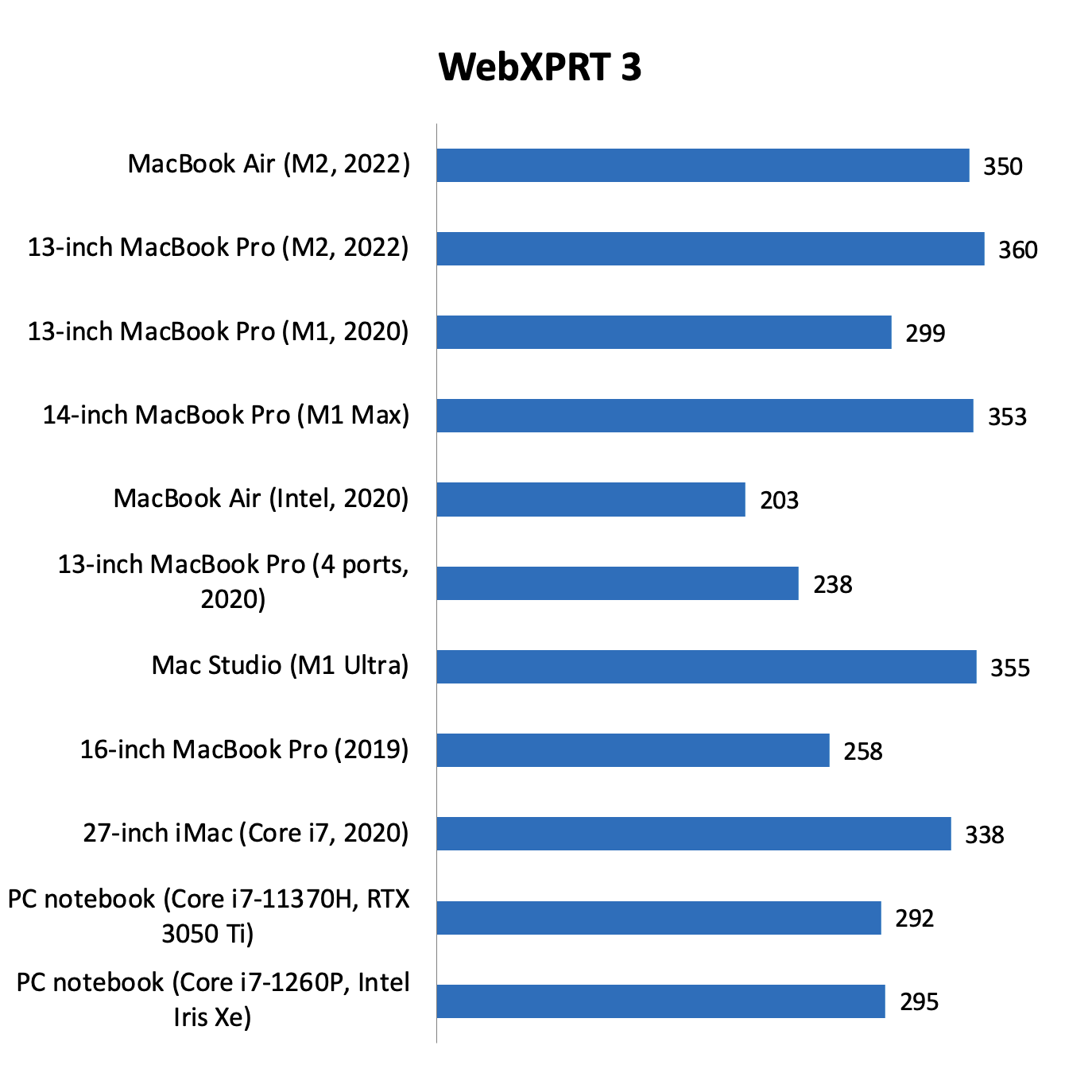

With 10 GPU cores, this MacBook Air has a similar performance potential as the M2 13-inch MacBook Pro. I say “potential” because graphics workloads are often more intensive and resource-demanding. In short benchmarks like Geekbench’s Compute workload and GFXBench, the MacBook Air recorded similar scores to the M2 13-inch MacBook Pro.
But throw on a longer benchmark like Unigine’s Valley, you can see that its performance will start to waver. On the Valley benchmark, the MacBook Air was about 9% slower. But even then, it was still quicker than an M1 13-inch MacBook Pro and a PC notebook with a Core i7-1260P processor.



Gaming is easily the most intensive thing most of us would do on our systems and the results were quite interesting. Even though the results show the MacBook Air easily keeping up with an M2 13-inch MacBook Pro, the fact is that its numbers will start to dip quite drastically after consecutive runs. After about 15 minutes, the MacBook Air will only achieve about 60 per cent of the performance that it did on its first run.
Incidentally and interestingly, that’s equivalent to a PC notebook with the Core i7-1260P processor. Anyhow, that’s something you have to keep in mind if you intend to use it for gaming, particularly titles that were meant for PCs. It will run them but how long it can sustain its performance is the issue.

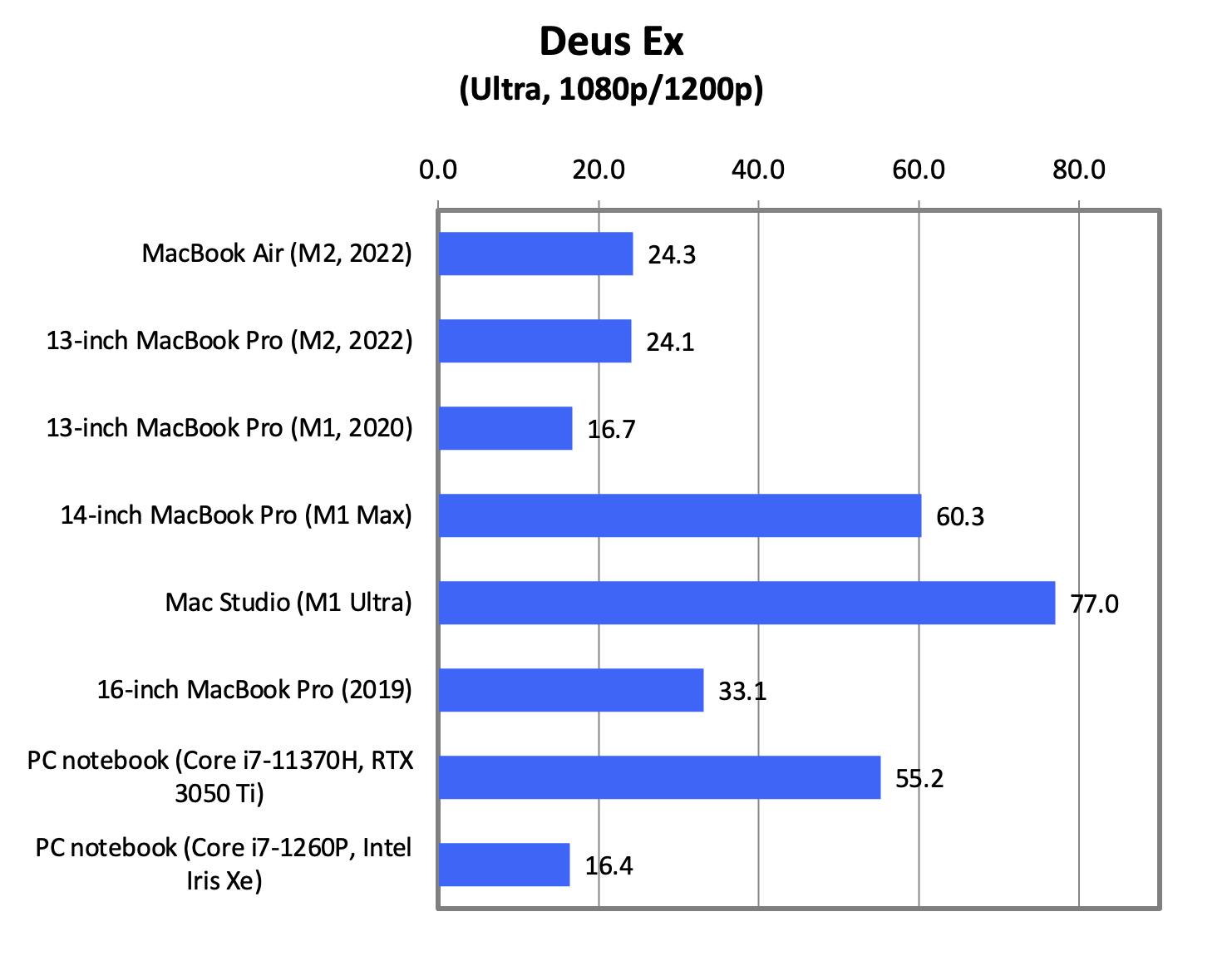

I wrote about how fantastic the M2 chip was in the M2 13-inch MacBook Pro review and it remains fantastic in the new MacBook Air even without active cooling. Granted, the kind of work that I do isn’t the most demanding, but crucially, the MacBook Air never felt underpowered.
Is a 14-inch MacBook Pro faster? Sure, but not by leaps and bounds if you are only going to be browsing the web and watching shows on Netflix or Disney+. Furthermore, the MacBook Air is a much more portable machine. I took the 14-inch MacBook Pro with me to WWDC 2022 and lost count of the number of times I wished I had a lighter machine with me.
Battery life is excellent too. Apple claims up to 18 hours of battery life when watching videos and that seems about right. In my experience, 12 hours of non-stop use shouldn't be an issue. Even after a typical work day with around 10 hours of use with over a dozen apps opened, Apple Music playing, and the display brightness set to a very sensible 60% or so, I had a little under 20% charge left.
Readers concerned about performance shouldn’t worry. Even a fully heat-soaked and hobbled MacBook Air has plenty of performance.
That said, this isn’t the machine for users who need to run intensive apps or games for extended periods. They would really be better off with a MacBook Pro. For most people whose primary requirements are to browse the web, answer emails, watch videos, edit the occasional video, the MacBook Air is perfect.

If you have an Intel-based MacBook Air, there’s absolutely no question you should upgrade to the new MacBook Air. Not only is it many times more powerful and faster, you’d also benefit from having a long battery life, a better webcam, speakers, and keyboard.
Readers who are thinking of jumping ship to a Mac because they are fed up with their Windows notebooks should also consider the MacBook Air too. I always say that benchmarks only tell half the story, but even an M2 chip with no fans is more than capable of keeping with, or in some cases, outperforming a PC notebook with Intel’s latest Core i7-1260P Alder Lake processor.
And in the real-world, the MacBook Air feels much snappier, and more responsive and fluid. If you are sick of all the random stutters and lags that you experience on your Windows machine, then a Mac using Apple Silicon is what you need. Furthermore, the MacBook Air runs much cooler and, because it doesn’t have any fans, is completely silent.
Some might be tempted to get the M1 MacBook Air (which still exists in the lineup) because it is cheaper. However, I stand by my initial opinion that the new MacBook Air is the better purchase.
The premium the newer model commands is easily justified by its fresh design, and better performance and features. Even if I was on a tight budget, I'd try to save more or find ways to get the extra monies required for the newer MacBook Air.
As for the new MacBook Air, I think the 8 GPU core version is the way to go – even if I didn’t personally test it. The way I see it is this: if you think you need more graphics performance, you are likely going to be doing sustained demanding workloads, in which case you’d be better off with a MacBook Pro.
One thing to note, however, is that custom configuring your MacBook Air gets pricey real quick. Though prices start at a very reasonable $1,699, that system only has 8GB of memory and 256GB of storage. It'll probably suffice for readers who aren't power users and have an iCloud storage subscription, but remember, like all modern MacBooks, this MacBook Air cannot be upgraded later.
Therefore, the ideal spec that I think most people should inspire to is the one with 16GB of memory and 512GB of storage. The memory and storage upgrades cost $300 each. So on an 8-core GPU model, the final system price is $2,299.

Although the MacBook Air is very good, it isn’t perfect. The Midnight finish acquires smudges faster than Grab can lose money; there’s only two USB-C ports and no SD card reader; the display isn’t OLED; and it only comes with 8GB of memory as standard.
But these are minor niggles. Fact is, the new MacBook Air is, without doubt, the MacBook that most people should buy. Even Windows users shopping for a new notebook should at least check out the new MacBook Air out at a nearby Apple Store.
It might change your mind. It’s super portable, well-built, has a nice display, good performance, excellent battery life, runs silently and cool, and is relatively well-priced (if you go light on the options).
All in all, I think the new MacBook Air is a home run. It's everything that most people want from an everyday MacBook. Well done, Apple.
This article was first published in HardwareZone.